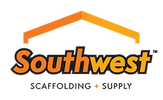Scaffold Planks Are Not Just "Wood Boards"—What You Need to Know
To the untrained eye, scaffold planks might look like regular pieces of wood. But don’t be fooled—grabbing a random 2x10 from the lumber yard and tossing it on a scaffold frame is a recipe for disaster. Scaffold planks are engineered, graded, and tested for very specific load and safety requirements. Let’s break down why they’re different and why it matters.
1. Strength Isn’t a Guess—It’s Engineered
Standard lumber, even if it looks solid, can vary widely in strength, grain structure, moisture content, and defects like knots. Scaffold planks, on the other hand, are:
Tested and graded to meet OSHA and ANSI standards
Made from specific species like Southern Yellow Pine or Douglas Fir, known for their strength
Sometimes laminated or made of engineered wood for even greater consistency.
Bottom line: Scaffold planks are built to hold people and materials safely, not to build decks or fences.
2. Deflection Matters (and Regular Boards Fail Here)
When you step on a scaffold plank, it must resist deflection (bending). Even a small amount of sag underfoot can lead to:
Loss of balance
Tripping hazards
Fatigue from instability
Eventual failure of the board
Proper scaffold planks are tested to meet strict deflection limits under load. Your average hardware-store board? Not even close.
3. OSHA Has a Lot to Say About Scaffold Planks
According to OSHA standards:
Planks must support at least four times the intended load.
Wood planks must be visually inspected for defects before use.
Planks must overlap properly and extend a minimum distance past supports.
Using ungraded lumber on scaffolding is not OSHA compliant and could result in major fines—or worse, a workplace injury or fatality.
4. Metal and Composite Planks: Even Stronger Options
Southwest Scaffolding also offers:
Steel scaffold planks: Incredibly durable, slip-resistant, fire-resistant
Aluminum planks: Lightweight but strong, often used for roofing or specialty trades
LVL (Laminated Veneer Lumber) scaffold boards: More uniform than solid wood, with an excellent strength-to-weight ratio
Each has unique advantages depending on your jobsite needs—and all are far superior to untreated lumber.
5. Real Risks of Using the Wrong Plank
Here’s what can happen if you use an unapproved board:
Cracking or catastrophic failure under weight
Lawsuits or workers’ comp claims
Failed safety inspections or shutdowns
Long-term liability for business owners
The cost of proper scaffold planks is minimal compared to the true cost of a fall.
Final Word: Don’t Trust Just Any Board
If it’s not rated and tested for scaffolding, it doesn’t belong on your scaffold. At Southwest Scaffolding, we supply a wide range of scaffold planks designed to meet industry standards and keep your crews safe.
Need help choosing the right planks for your setup? Give us a call or check out our scaffold plank options online—we’ll get you what you need to stay compliant and confident on every jobsite.
Recent Posts
-
How Scaffolding Impacts Project Scheduling and Deadlines
When people think about project delays, they usually blame weather, material shortages, or labor iss …Dec 15th 2025 -
Working With Scaffolding in Winter
Winter may slow construction down, but it doesn’t stop it, and when scaffolding is involved, cold-se …Dec 8th 2025 -
When Renovation Turns Risky: Lessons from the Tai Po Fire and the Role of Scaffolding Safety
The recent fire in Hong Kong’s Tai Po district has shaken the global construction and safety communi …Nov 30th 2025




